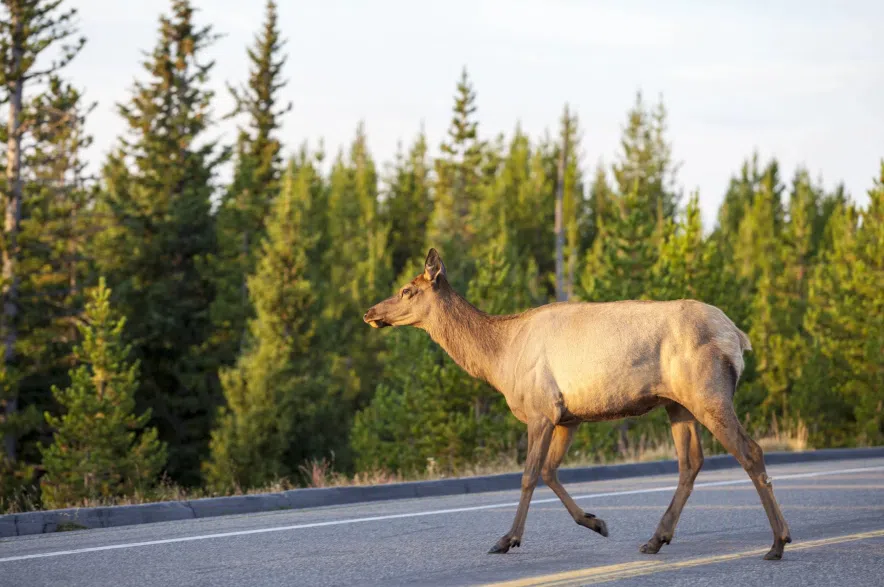An 18-year-old man from Kinistino has died after his vehicle hit an elk late Thursday night.
Melfort RCMP said in a news release on May 30 that officers were called to the scene of a serious wildlife-related collision on Highway 6 near Gronlid around 11 p.m on May 29.
Read more:
- Sask. Marshals Service working on front lines with Prince Albert police
- Manslaughter charge in child’s death on Shoal Lake Cree Nation upgraded to murder
- Man shot in arm by RCMP officer after police chase in Canwood area
The teen, who was the driver and sole occupant of the vehicle, was declared dead at the scene.
Highway 6 was closed following the collision, but has since reopened.
Spring is when Saskatchewan’s wildlife is most active near our province’s roadways.
The province has seen just shy of 3,000 incidents involving vehicles and wildlife — 2,930 to be exact — in the past three months and each year SGI says there are an average of 400 injuries and at least one fatality in the province due to wildlife collisions.
SGI communication consultant Jeremy Pilon says keeping an eye out for signs indicating known animal crossing locations is key.
“The places that we see more animals are usually those places that we see marked on the side of the road,” said Pilon.
“The moose or the deer signs are places that we know that they’re going to be crossing or where they live and exist.”
It’s not just knowing where wildlife is going to be that is the only thing to be aware of though, time of day can also make a big difference.
“The times of day where we see a lot more movement is around sunrise and sunset. It’s made even more difficult because the sun’s low on the horizon. You’ve got that glare and it can be hard to see animals approaching the roads,” said Pilon.
“During those twilight periods between sunrise and sunset, make sure you’re slowing down and constantly scanning the road as you drive so that you can watch for those eyes reflecting your headlights.”
Pilon added that while drivers afre keeping an eye out for wildlife, giving other motorists that are doing the same some extra space goes a long way in avoiding issues.
“One of the ones that might help too is making sure you have a good following distance between the car in front of you because if they swerve or brake to avoid an animal you want to make sure that you’ve got the room to do so as well,” said Pilon.
“They might miss it and then and then you may end up getting in the collision with the animal, so making sure you’ve got a good long following distance, three seconds is the recommendation.
“If it’s raining or you’re on a gravel road, you’ll want to increase that following distance to five or six seconds, so you have plenty of time to slow down and avoid a collision.”
Sometimes a collision is unavoidable, and if that happens, Pilon has some advice on what to do after.
“If you are in a collision with an animal, pull over to the shoulder if you can, turn on your hazard lights and take a moment to regain your composure. If your vehicle isn’t drivable, or if you have an injured animal, you’ll want to contact your local RCMP detachment.”
He said if damage is less severe and the vehicle is still drivable, all that is needed is to follow the regular SGI claims reporting procedures, which can be found by clicking here.
— with files from WestCentral Online
Read more:











